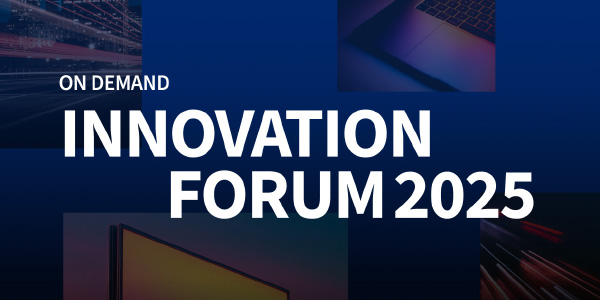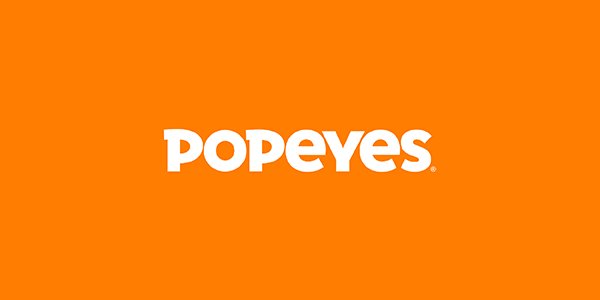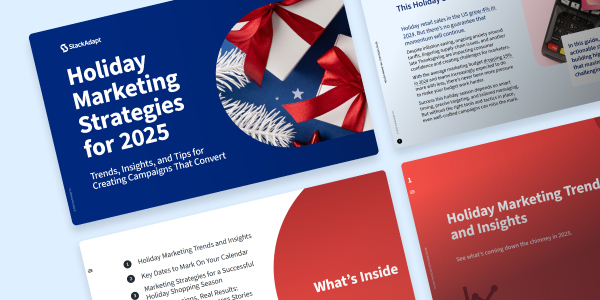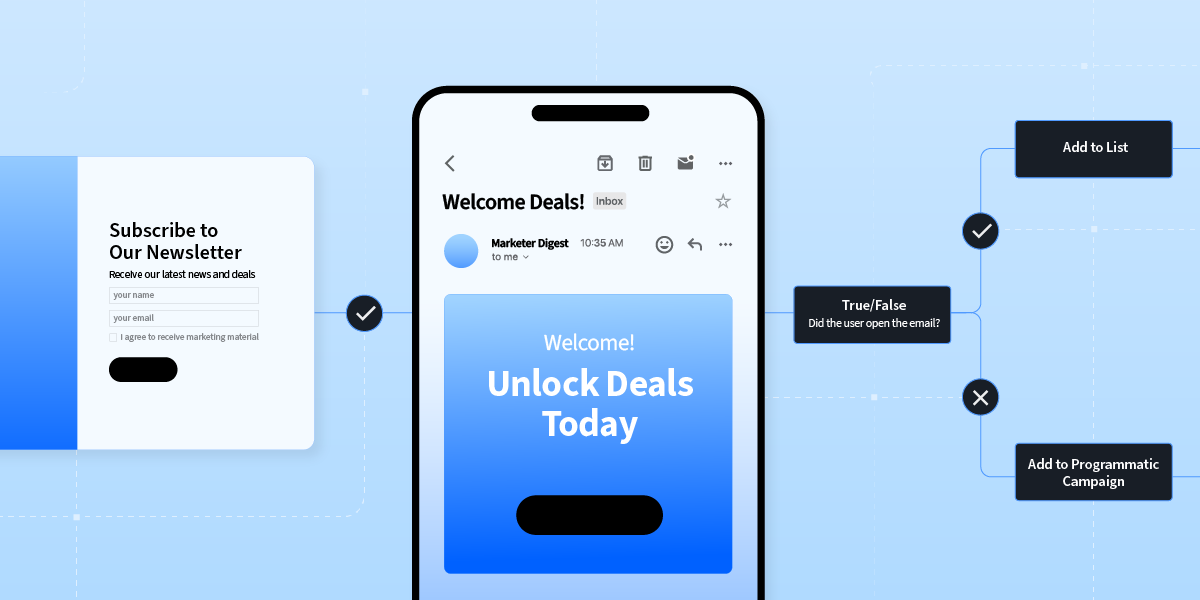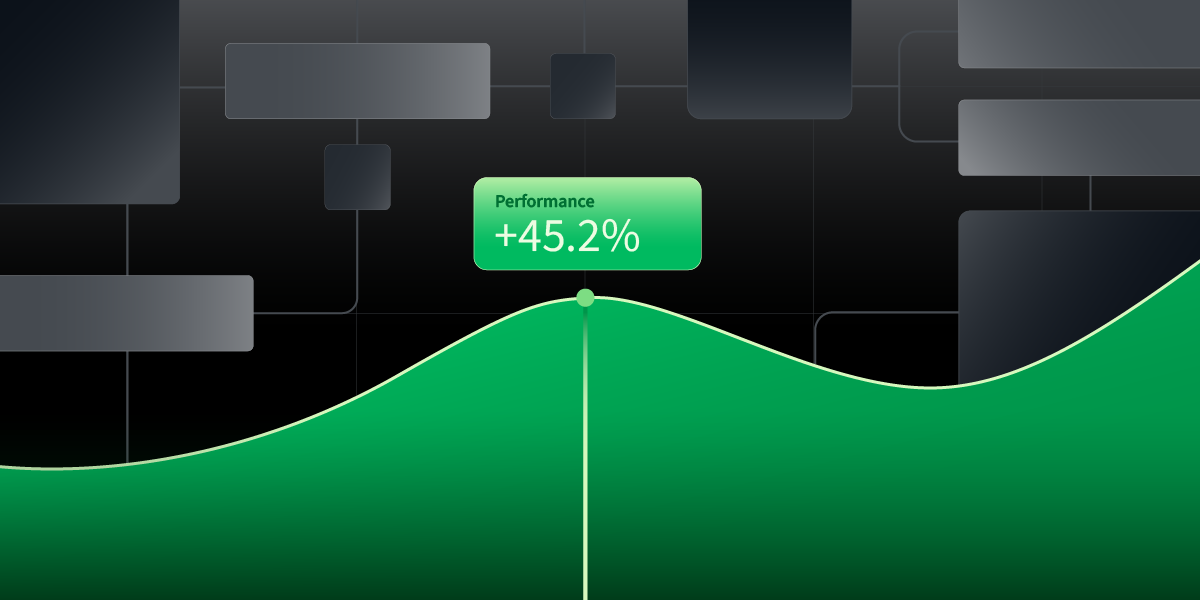What Is Martech? Definition and Tips on How to Use Marketing Technology

Today’s customers often engage across multiple touchpoints—from display ads and social media to search and email—before making a final purchase.
At the same time, they expect highly personalized experiences at every stage of their buying journey, making it difficult for marketers to deliver consistent and relevant messaging across every channel, especially when data is fragmented and teams are expected to do more with less.
This disconnect leads to inefficiencies, missed opportunities, and inconsistent buying experiences that cost companies more than just their budget, eroding brand loyalty and decreasing return on investment (ROI) over the long run.
Marketing technology (or martech, for short) is helping fill the gaps.
Over the past decade and a half, martech has evolved from simple email and CRM tools to sophisticated AI-powered platforms, allowing brands and agencies to deliver more tailored, automated campaigns with higher levels of precision and efficiency than ever before.
That’s why, despite marketing budgets shrinking across the board, martech continues to stand out as one of the few areas where CMOs seem willing to invest. A 2024 study found that CMOs planned to increase their spending and devote 30.9% of their marketing budget to martech over the next five years.
Whether you’re new to the martech space or looking to optimize your existing stack, read on to learn what martech is, the types of tools available, and how to get started with it.
What Is Martech?
Martech refers to the array of software platforms and tools that marketers and marketing operations teams use to plan, execute, manage, and measure their marketing campaigns. Martech allows marketers to leverage automation, customer data, and analytics to streamline workflows and deliver more personalized, impactful campaigns across channels. Ultimately, the goal of martech is to make marketing efforts more efficient, scalable, and aligned with business objectives.
What’s the Difference Between Martech and Adtech?
Martech is defined as the software and tools marketers use to manage relationships with existing customers or known prospects. These solutions automate, measure, and manage campaigns across multiple channels, streamlining marketing operations and driving deeper engagement.
Adtech, on the other hand, refers to the platforms and tools brands, agencies, and publishers use to automate and optimize the buying, selling, delivery, and measurement of digital advertising across channels, including display, video, connected TV (CTV), and digital out-of-home (DOOH).
The key difference between adtech and martech is the stage of the customer journey they primarily serve.
While adtech typically supports top-of-funnel efforts, such as building brand awareness and reaching new audiences, martech focuses more on middle-to-bottom funnel tasks, including customer engagement, nurturing, and retention. This makes it essential for building long-term relationships with customers and sustaining business growth.

Increasingly, marketers use adtech and martech solutions together to create cohesive and more customized marketing campaigns that drive results across the entire customer journey, from initial awareness through to retention and advocacy, effectively bridging the gap between brand-building and performance marketing.
What Is a Martech Stack?
A martech stack is the combination of martech tools and platforms that businesses use to effectively reach, engage, and convert their target audiences. These integrated tools typically span various functions, including audience segmentation, content creation, campaign management, and performance tracking, covering the full marketing lifecycle—from planning and execution to measurement and optimization.
What’s in your martech stack, and its size, can vary widely depending on your industry, business, and goals.
For example, B2B companies often prioritize sales and marketing alignment, lead nurturing, and account-based marketing, which leads them to use customer relationship management (CRM) systems, marketing automation software, and lead scoring tools. Meanwhile, B2C brands that focus on broad audience reach and customer engagement are more likely to leverage tools such as social media management platforms, demand-side platforms (DSPs), and dynamic creative optimization (DCO) tools.
Whatever you choose to include, a well-built martech stack should help streamline marketing operations, personalize customer experiences, improve internal team collaboration, and drive greater ROI.
To maximize its effectiveness, it’s important to continuously evaluate and optimize your martech stack, ensuring each tool is properly integrated and aligned with your evolving marketing strategy and business objectives. Those that don’t risk compromising their operational efficiency (a 2023 Forrester study found that when adtech and martech tools aren’t aligned, it can lead to a 10–13% loss in resources).
“[Traditionally], none of these systems talk to each other. They all were siloed. As a result, a lot of companies have accumulated a lot of baggage,” says StackAdapt CEO and Co-founder Vitaly Pecherskiy, on The AI Advertising Podcast. “If we believe that the future will be in convergence of all these ecosystems to allow faster decision making, to be able to use AI to navigate all these functional areas to unlock better decision making, these systems need to converge in the first place.”
Types of Martech Tools and Platforms
Martech includes various platforms that allow marketers to collect valuable data, streamline processes, and influence customer experiences and buying behaviours. Below are some of the main categories of martech tools that marketers can use to optimize their strategies and generate results at every stage of the marketing funnel.
Data and Audience Management
These martech tools collect, unify, and activate customer data to create more targeted, personalized marketing campaigns and include:
- Customer Relationship Management (CRM) software: Stores and manages customer data, tracks interactions across various touchpoints, and helps optimize sales and marketing efforts.
- Customer Data Platforms (CDP): Consolidate and activate customer data from multiple sources to enable more relevant and targeted marketing campaigns.
- Data Management Platforms (DMP): Collect, segment, and activate audience data, primarily from 3rd-party sources, to enhance ad targeting and personalization.
- Account-Based Marketing (ABM) Platforms: Facilitate personalized B2B marketing campaigns by targeting high-value accounts with pinpoint accuracy through tailored campaigns.
Interesting fact: According to a research report from StackAdapt and Ascend2, 48% of agencies plan to invest in CDPs and other types of data management tools in 2025, signalling a continued shift toward data ownership and audience-centric digital marketing strategies.
Campaign Execution and Automation
These tools automate marketing workflows and simplify multi-channel campaign management, allowing marketers to execute marketing campaigns at scale:
- Marketing Automation Tools: Automate multi-channel campaigns, lead nurturing, audience segmentation, performance tracking, and more.
- Email Marketing Tools: Automate email workflows, personalize messaging, and track campaign performance.
- Mobile Marketing Platforms: Manage mobile-specific channels, including SMS, push notifications, and in-app messaging, to engage audiences directly on their mobile devices.
- Live Chat and Chatbot Tools: Enable real-time customer interactions and support, enhancing customer engagement, generating leads, and enhancing the overall user experience.
- Event Marketing Tools: Plan, promote, and manage virtual or in-person events, track attendee registrations, and integrate event data into CRMs and marketing automation workflows.
- Web Personalization Tools: Customize website content and experiences based on user behaviour, preferences, or audience segments to increase engagement and conversions.
Content Creation and Distribution
For creating, publishing, and amplifying content across digital channels, the following martech tools and platforms are often used to maximize reach and engagement:
- Content Management Systems (CMS): Streamline content creation, management, and publishing on websites to help support SEO and content marketing efforts.
- Video Marketing Platforms: Create, distribute, host, and analyze the performance of video content to drive deeper audience engagement and accelerate growth.
- Social Media Management Tools: Schedule, analyze, and optimize social media posts, monitor engagement, and integrate with paid ad platforms to maximize reach and campaign effectiveness.
- Influencer Marketing Platforms: Identify, manage, and measure influencer relationships and marketing campaigns to amplify brand messaging and audience reach.
Advertising and Media Buying
These tools, typically classified as adtech, help marketers plan, buy, and measure paid media across channels, forming the bedrock of programmatic advertising:
- Demand-Side Platforms (DSP): Centralized platforms that enable advertisers to buy digital ad inventory programmatically across multiple ad exchanges and supply sources in real time.
- Supply-Side Platforms (SSP): Let publishers manage, optimize, and sell their ad inventory.
- Ad Exchanges: Digital marketplaces where advertisers and publishers buy and sell ad inventory through programmatic buying methods such as automated bidding and direct deals.
- Ad Servers: Host, deliver, and track digital ad placements across the open internet, maximizing results, and ensuring accurate reporting.
- Ad Verification Tools: Monitor ad placements for fraud, viewability, brand safety, and compliance with campaign requirements.
Organic Search and Visibility
These tools support both organic discovery and paid search efforts, with some falling into a hybrid of martech and adtech (depending on usage):
- Search Engine Optimization (SEO) Tools: Track rankings, analyze keywords, audit technical performance, and provide competitive insights to improve search visibility.
- Search Engine Marketing (SEM) Platforms: Manage paid search advertising campaigns, allowing marketers to reach customers through keyword-targeted ads and accurately measure campaign impact.
Measurement and Optimization
To understand the effectiveness of marketing campaigns, these types of tools can be used to track performance and identify opportunities for further improvement:
- Analytics and Business Intelligence (BI) Tools: Assess marketing effectiveness, track KPIs, provide attribution insights, and help forecast trends.
- Conversion Rate Optimization (CRO) Tools: Enable the testing and optimization of website elements, such as landing pages and forms, to improve conversion rates.
- Customer Journey Analytics Tools: Analyze customer journeys across channels and digital touchpoints, helping marketers better understand behavioural patterns and optimize engagement.
- Attribution Platforms: Provide marketers with detailed insights into the effectiveness of various advertising channels and marketing touchpoints, enabling them to drive more conversions and optimize resource allocation.
Why Is Martech Important?
Martech has become essential in today’s digital-first marketing landscape, allowing marketers to deliver unique experiences, streamline workflows, and make data-driven decisions at scale. As customer expectations rise and competition intensifies, martech empowers brands to better understand their audiences, optimize resources, and achieve higher returns on their marketing investments.
Here are some of the main benefits of martech:
Enhanced Efficiency Through Automation
Automation is at the heart of martech, helping marketers eliminate manual tasks like data entry, content scheduling, and campaign reporting, reducing human error and saving valuable time. By streamlining workflows such as email automation, social media management, audience segmentation, and performance tracking, martech allows teams to launch and optimize campaigns quickly and with greater accuracy, giving them more bandwidth to focus on other strategic, high-impact work that drives results.
Data-Driven Decision Making and Deep Customer Insights
Martech platforms can collect, analyze, and consolidate customer data from multiple sources into a unified view, providing marketers with deeper insights into customer behaviour, shopping preferences, and buying patterns that were previously difficult or nearly impossible to uncover without modern technology. These platforms can also use AI and predictive analytics to move beyond simply summarizing historical data, helping them forecast future customer actions and proactively adjust campaigns to boost their effectiveness.
For instance, a CDP can combine data from email marketing campaigns, website interactions, social media engagement, and transaction histories to build detailed customer profiles that help marketers anticipate customer needs and deliver more personalized campaigns.
Personalized Customer Experiences
Martech makes it easier for marketers to deliver individualized experiences at scale, tailoring content, offers, and messaging based on each individual consumer’s unique preferences, behaviour, and past interactions with a brand.
For example, DCO can be used to automatically generate multiple ad variations in real time based on user data, such as their location, past browsing behaviour, or previous items added to their cart. This ensures product recommendations and messaging are as relevant and engaging as possible to each user.
Improved Customer Engagement and Brand Loyalty
Martech helps brands deepen customer relationships and build long-term brand loyalty by delivering more relevant and timely communications. AI-powered tools play an increasing role here, anticipating customer needs and automating personalized messaging across email and advertising channels to make every interaction feel more intentional and aligned with customer expectations.
Streamlined Marketing Workflows
Martech solutions simplify and streamline marketing processes, empowering teams to collaborate more effectively and spend more time on strategic initiatives. By centralizing campaign management, automating workflows, and consolidating data in a single platform, marketers can rapidly build, manage, and execute campaigns across multiple channels without the friction that often comes with manual coordination.
For example, StackAdapt’s new martech offering integrates campaign creation, orchestration, and management into a single, intuitive interface, allowing marketers to quickly launch and optimize campaigns across both owned and paid media channels in real time.
Greater Cost-Effectiveness
Martech helps companies make the most of their marketing budgets by improving operational efficiency and reducing wasted ad spend. It can provide detailed insights into campaign performance and customer behaviour, allowing marketers to allocate budgets more effectively and minimize unnecessary spending.
For example, by providing marketers with actionable insights and real-time performance data, teams can quickly identify the most impactful channels, determine which messaging resonates the most, refine their audience targeting, and optimize campaigns overall to ensure their budget is directed toward strategies that move the needle.
Key Challenges in Martech Adoption
While martech offers significant benefits, adoption isn’t without challenges.
Unsurprisingly, given recent and ongoing privacy changes and tightening regulations, issues around data integration and management continue to be a top concern for brands and agencies investing in martech. For example, a 2025 survey from MarTech found that data silos continue to be one of the top concerns for marketers.
Another persistent challenge is the complexity and fragmentation within martech stacks themselves. According to Forrester Consulting, 31% of global ad agencies cite the complexity of using adtech and martech as their biggest concern.
Similarly, in our recent survey with Ascend2, 33% of agencies said that managing multiple platforms was one of their biggest challenges.
At the same time, another survey found that even when tech stacks were set up correctly, 28% of small to mid-size businesses in the US still weren’t using them to their full potential.
But one of the biggest challenges in martech adoption might be the cost itself.
A Gartner study found that 59% of CMOs feel they have insufficient budget to execute their strategy in 2025. That said, two of the top actions they planned to take to overcome budget constraints included leveraging data and analytics to boost campaign effectiveness and harnessing technology to automate tasks and streamline operations—both key areas where martech excels.
To help address these hurdles, marketers increasingly need simpler, more integrated solutions.
StackAdapt’s new martech offering addresses these challenges head-on by centralizing data through a unified Data Hub, eliminating fragmentation and simplifying integration. With it, marketers can gain a single view of the customer journey, enabling precise audience segmentation, targeted campaigns, and clearer, more measurable insights into cross-channel performance. Learn more here.
5 Martech Stats That Prove It’s Essential for Modern Marketers
Still not sold on the power of martech? Here are a few recent stats that show why marketers can’t afford to ignore it:
- The global martech market is undergoing rapid expansion and is expected to reach $558 billion USD by 2025, representing a 20% YoY growth. By 2034, revenues are forecasted to reach nearly $2.86 trillion USD.
- According to Statista, US B2B marketers will spend $10.11 billion USD on martech in 2025.
- AI capabilities are becoming increasingly essential for campaign automation, personalization, and data-informed decision-making. According to HubSpot, 64% of marketers use AI tools for automation, and Gartner forecasts that 80% of creative roles will rely on generative AI to enhance their marketing efforts by 2026.
- First-party data continues to rise in importance—LinkedIn reports that 84% of marketers rely on 1st-party data to improve their targeting and personalization efforts, while use of 3rd-party data continues to decline, with only 61% of marketers still using it in 2024 (down from 75% in 2022).
- Martech investments continue to be heavily focused on delivering the right message to the right person at the right time—a 2024 report from Twilio Segment found that 89% of marketing leaders believe personalization will be crucial to their business success over the next three years.
The Future of Martech
The martech landscape continues to evolve rapidly, driven by technological advancements and shifting consumer expectations.
As we reported in a recent article on the trends shaping the future of martech, one of the most influential forces shaping its future is, unsurprisingly, AI, which has moved from being a buzzword to becoming the norm in modern marketing.
No longer limited to automating repetitive tasks or generating basic insights, AI is evolving into a powerful tool that can predict future customer preferences by analyzing past behaviours, optimize marketing campaigns based on the most effective creative variations, and dynamically adjust ad placements without manual intervention.
AI also allows marketers to personalize customer experiences on a much larger scale than previously thought possible. Instead of creating one-size-fits-all campaigns or relying on broad audience segments, businesses can use AI to deliver more relevant product recommendations, create email content tailored to individual interests, and target ads with unmatched precision.
As a result, it’s no surprise that marketers see AI as the driving force behind the next wave of martech innovation. According to a November 2024 survey, 60% of marketers believe AI and machine learning will have the greatest impact on marketing strategies over the next five years.
The Convergence of Martech and Adtech Continues
Perhaps the most transformative shift shaping the future of marketing is the ongoing convergence of martech and adtech.
While martech and adtech traditionally operated in separate silos—with martech tools largely responsible for managing customer relationships and adtech more focused on attracting new customers—the lines between both martech and adtech are increasingly blurring.
Now, platforms like StackAdapt allow brands and agencies to centralize customer data, deliver targeted ads across all channels, and ensure a seamless experience throughout the entire customer journey—all from a single platform.
To learn more, speak with our team.
Martech FAQs
A CRM helps marketers organize, track, and manage customer interactions across multiple channels. It centralizes customer data, enabling marketers to personalize campaigns, improve targeting, enhance customer engagement, and boost overall sales when used in coordination with other tools in the martech stack.
According to Scott Brinker, VP of Platform Ecosystem at HubSpot, and creator of the Marketing Technology Landscape Supergraphic, there were 14,106 martech tools available in 2024—an increase of 27.8% from the previous year and a staggering 9,304% growth since the first landscape was published.
Yes, martech adoption is on the rise. According to EMARKETER, US CMOs plan to allocate 23.5% of their marketing budgets to martech in 2025 and expect that share to grow to nearly one-third by 2029.
No. Martech is widely used by both B2B and B2C companies. While B2B companies often focus martech efforts on lead nurturing and sales alignment, B2C brands can also use martech to segment audiences, personalize marketing campaigns, and enhance the overall customer experience.
